
In the 22nd year of the Meiji era (aka 1889), the very first Japanese kyūshoku (school lunch) was served up at an elementary school in Tsuruoka City, Yamagata Prefecture. Although the first menu was very simply prepared, it provided the growing children with an important source of nourishment that not all of them could receive at home.
Fast-forward to 2015–Japanese schoolchildren (and their teachers!) continue to eat school lunches every day, as opposed to children in many other countries who bring their lunches from home. If you’re working in a Japanese school, you should already be familiar with the daily feeling of either excitement or disappointment when you see the lunch menu for the day. But just consider this–would you rather eat the types of lunches served today, or those that were served 100 years ago? Read on to learn about the evolution of Japanese school lunches and decide for yourself!
Love’em or hate’em, school lunches at Japanese schools are here to stay. Everyone, including the teachers and even the principal, sit down to eat the same lunch every day. Children are encouraged to be thankful for the food and finish every last bite, including any foods that they’re not particularly fond of. If you’re interested in learning more about the daily routine revolving around preparing and serving the food, please see our previous post here. Otherwise, let’s dive right into the history of Japanese school lunches!
The Gakkō Kyūshoku website has provided a concise history of the lunches, including pictures of sample meals from different time periods. The following pieces of information and images were taken from their website.
The first school lunch in Japan was started by a Buddhist monk who oversaw a school in Tsuruoka City, Yamagata Prefecture. The idea to provide lunch at school came about when he noticed that many of the disadvantaged children weren’t coming to school with packed lunches from home. These first simple lunches consisted of onigiri (rice balls), grilled fish, and pickled vegetables called tsukemono, as seen below:
▼A typical school lunch from year 22 of the Meiji era (1889)
Years later, the people of Yamagata erected a commemorative monument on the school grounds where the first school lunch was served. Here’s what it looks like today:
Word spread about the success of the monk’s school lunch program. Before long, schools around the country had embraced the idea and were beginning to offer lunches to their students as well. Rice mixed with meat and/or vegetables, fish, and varieties of miso soup became typical food items found on the menus.
During these early years, schools usually served the food in porcelain bowls and other dishware, making it feel more like a home-cooked meal than a school-provided lunch.
▼Year 12 of the Taishō era (1923)
▼Year 2 of the Shōwa era (1927)
After the outbreak of WWII, school lunches were either cut or reduced in many parts of the country due to local wartime food shortages. The following image is an example of a dumpling miso soup eaten during the war years:
▼Year 17 of the Shōwa era (1942)
In 1944, approximately two million elementary school-aged children received school lunch in six major cities throughout Japan. Although the war ended in 1945, food shortages continued, and many children were left malnourished. It is estimated that elementary school sixth grade students at the time had bodies equivalent to those of fourth grade students of today due to stunted growth.
Note the inclusion of milk in the sample meal from 1945 below:
▼Year 20 of the Shōwa era (1945)
In 1946, the vice-minister of three governmental ministries released a decree to encourage the widespread implementation of school lunches throughout the country. Consequently, a school lunch system was implemented on December 24 of that year at all schools in Tokyo, Kanagawa, and Chiba prefectures. Today, some schools in those regions offer a special menu during the week of January 24-30 in commemoration (since holidays typically interfere with the final week of December and no school lunch is served then anyway).
In case you were wondering, that’s tomato stew in the picture below.
▼Year 22 of the Shōwa era (1947)
In 1947, approximately three million children around the country began receiving school lunch, including powdered non-fat milk donated from America. Two years later, UNICEF also donated free shipments of the powdered milk.
In 1950, elementary school-aged children in eight major Japanese cities received complete school lunches with the addition of bread made using wheat flour from America. A bread roll coupled with potato stew, croquette, sliced cabbage, and milk is an example of what a typical lunch served during this year would look like:
▼Year 25 of the Shōwa era (1950)
The year 1951 saw a movement unfold throughout the country for school lunches to be partially funded by government subsidies. By the following year, the government funded half the cost of the wheat flour used in school lunch bread. Starting in April, elementary school-aged children in all schools throughout the country received complete school lunches. Lunches over the following years tended to include a number of fried menu items.
▼Year 27 of the Shōwa era (1952)
In 1954, the School Lunch Act was implemented. School lunch was recognized as a legitimate part of children’s education as a way to teach knowledge about how food is produced and important dining customs. It also encouraged healthy social interaction between classmates and within the school, a tenet which is still promoted to this day.
▼Year 30 of the Shōwa era (1955)
▼Year 32 of the Shōwa era (1957)
In 1958, the administrative director of the Ministry of Education, Culture, Sports, Science and Technology (MEXT) promoted an outline for the inclusion of milk in school lunches. Fresh cow’s milk gradually replaced powdered milk over the next several years.
▼Year 38 of the Shōwa era (1963)
The dish on the right-hand side of the tray below is oden, a Japanese favorite in the wintertime!
▼Year 39 of the Shōwa era (1964)
In addition, although bread rolls had been the norm for a long time, fried bread and other forms of cooked bread were being introduced into school lunches by the end of the 1950s (see the above photo). Soft noodles also began to appear in some school lunches in the central Kanto region of Japan.
▼Year 40 of the Shōwa era (1965)
▼Year 45 of the Shōwa era (1970)
In 1971, the contents of school lunches were more or less standardized by governmental decree.
▼Year 49 of the Shōwa era (1974)
▼Year 50 of the Shōwa era (1975)
Meals with warm, freshly cooked rice began to be served in 1976. There was also an increase in the variety of foods served compared to the selection from just two decades before.
▼Year 52 of the Shōwa era (1977)
▼Year 54 of the Shōwa era (1979)
In this next photo, you can see that the previously bottled milk was finally replaced by milk cartons. Continue to track these subtle changes in the remaining images.
▼Year 56 of the Shōwa era (1981)
Egg and spinach gratin, along with shrimp salad and braided bread? How fancy!
▼Year 58 of the Shōwa era (1983)
Even bibimbap, a Korean mixed rice dish, made its debut in 1985. Also, I spy some yummy-looking dessert pudding.
▼Year 60 of the Shōwa era (1985)
▼Year 62 of the Shōwa era (1987)
1993 and 1994 were bad years for rice crops, so school districts were singularly allowed to supplement their school lunches with rice not subject to governmental controls. By 2000, this type of rice became allowed for general usage.
▼Year 12 of the Heisei era (2000)
Japanese school lunches sure have come a long way over the past century. Menus are now more varied and nutritionally balanced to ensure the development of healthy school-aged children.
It’s worth noting that school lunches have also come under fire for issues regarding cleanliness and proper food preparation. In particular, a tragic incident in 1996 in Okayama Prefecture led to the deaths of two children caused by improper food preparation; an additional 468 showed symptoms of food poisoning. A subsequent investigation revealed the presence of E. coli bacteria in their school lunches.
I myself had the privilege to work for two years at a junior high school in Yamagata Prefecture, the original birthplace of Japanese school lunches. While the quality of the meals wasn’t always the greatest, I look back at them fondly for their convenience, low cost (less than 300 yen [US$2.49] per meal), and the opportunity to try a variety of foods that I wouldn’t normally have packed for myself. Plus, nothing beats a bowl of ready-to-eat, steaming rice in the middle of winter!
My school and other schools in the city operated on a rotating menu schedule, which always included a soup, some type of carb, a vegetable side dish, and milk. Bread was usually served on Mondays, noodles on Wednesdays (during cold months only), and rice on the rest of the days. I always looked forward to special holiday meals, which often included an extra special treat or a culturally relevant food.
I think it’s fitting to end this piece with two photos of Yamagata junior high school lunches. Just look at how far they’ve come since 1889!
▼Circa 2012
Sources/Images: Gakkou Kyuushoku, Unilab Tsuruoka, RocketNews24

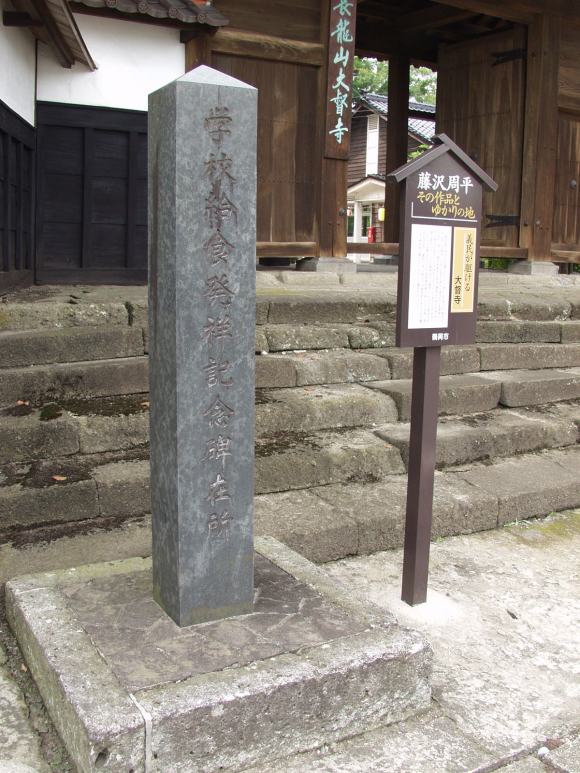


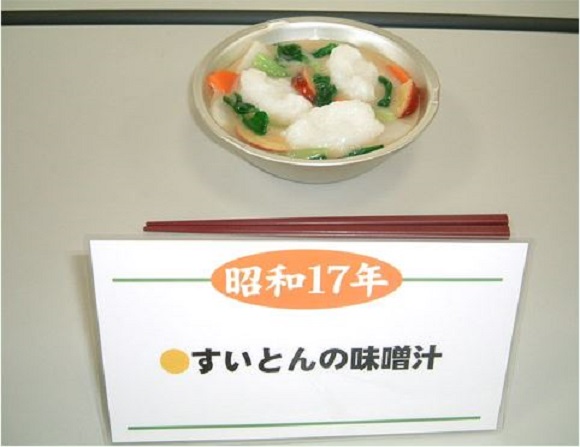
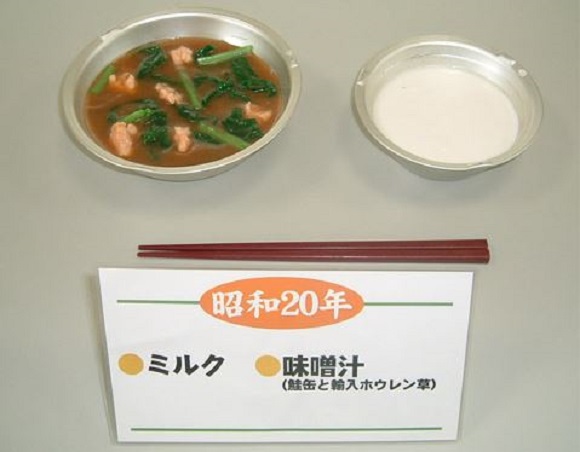

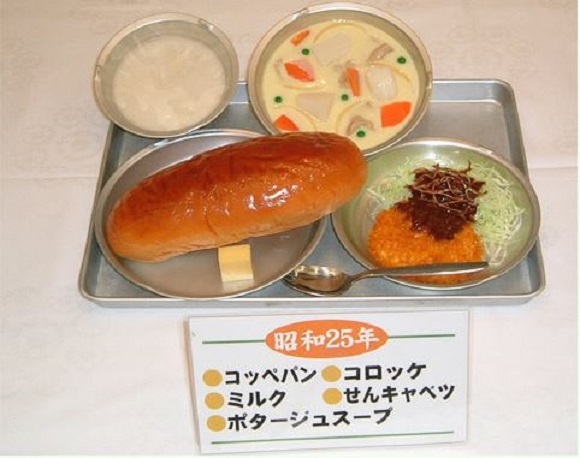
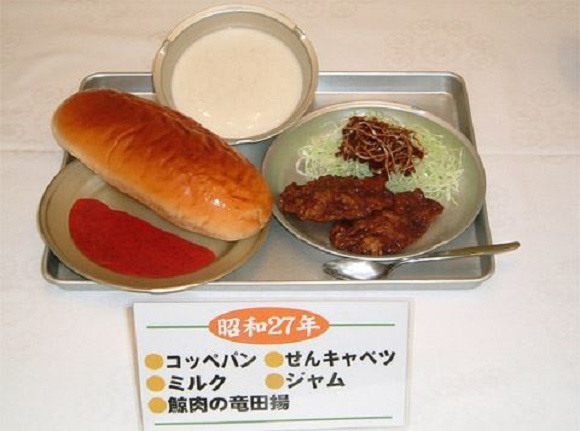
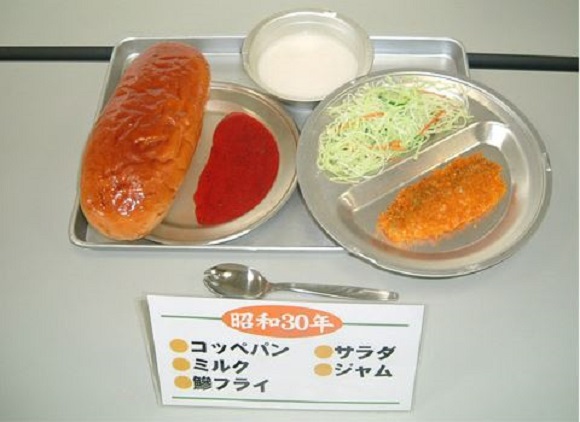
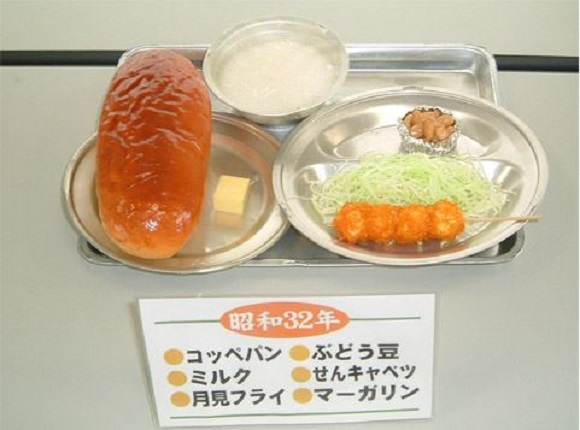

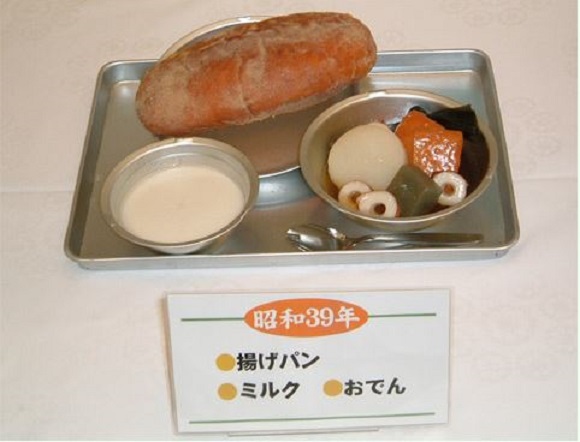
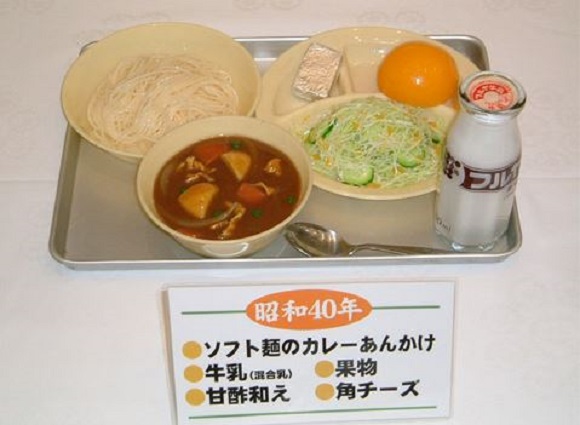
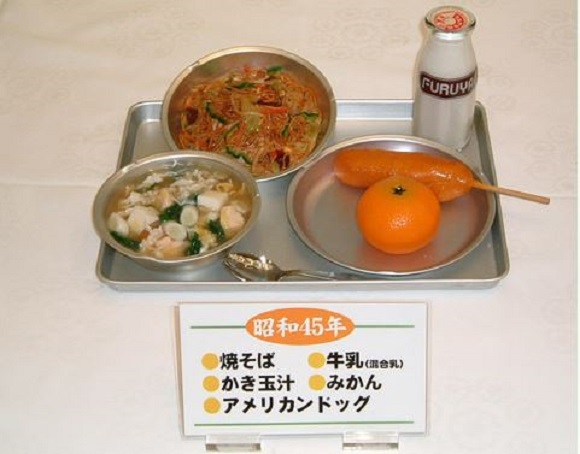
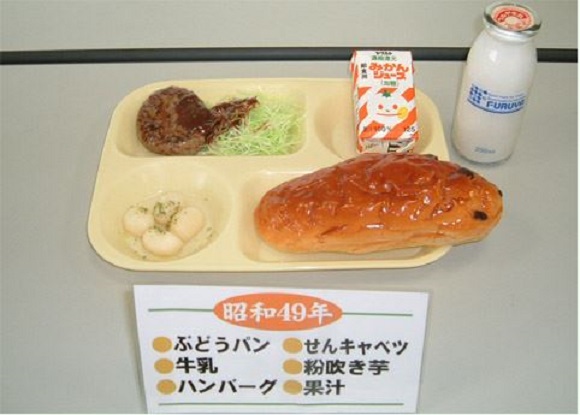

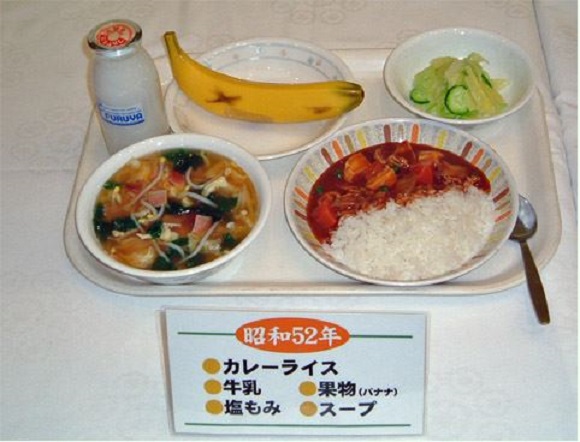
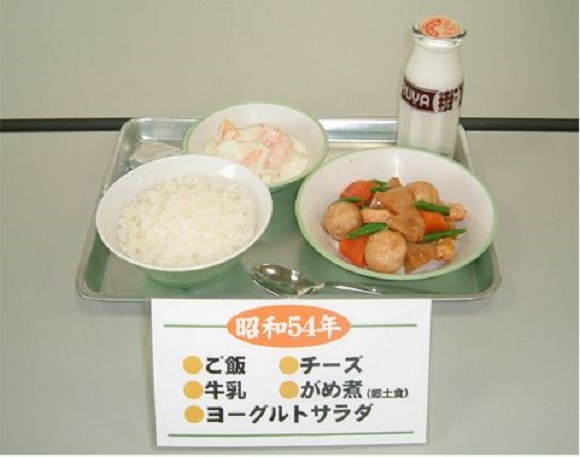
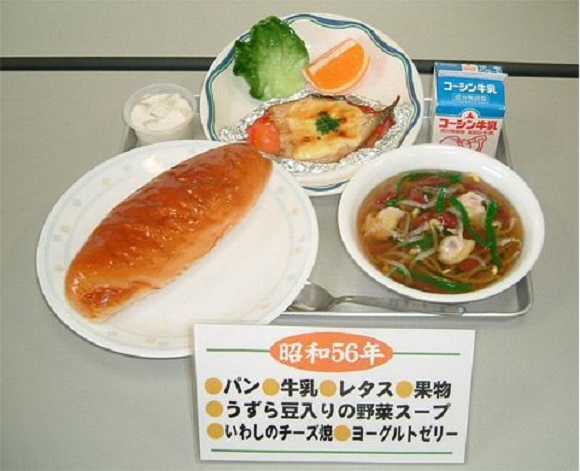
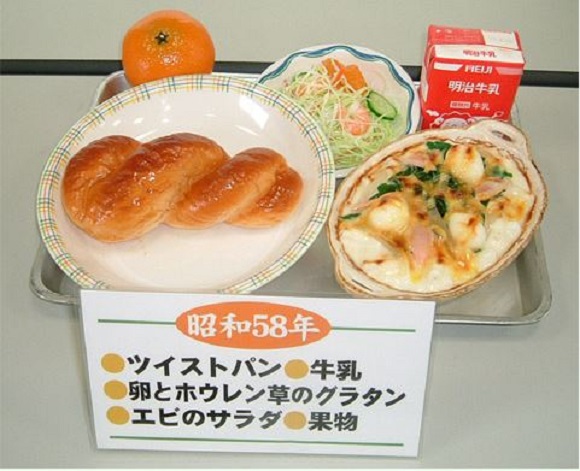

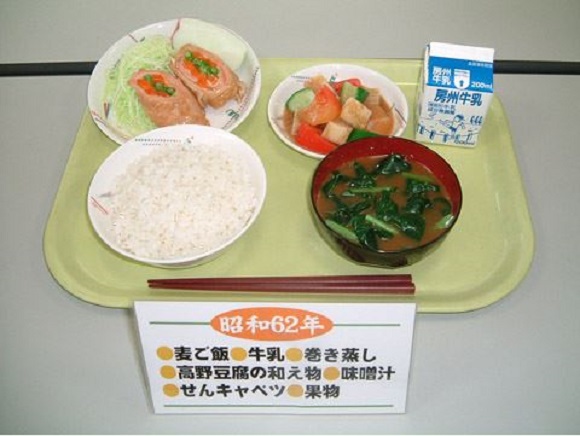
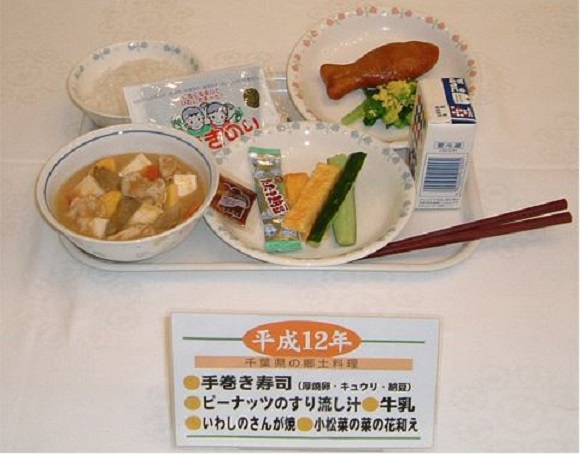
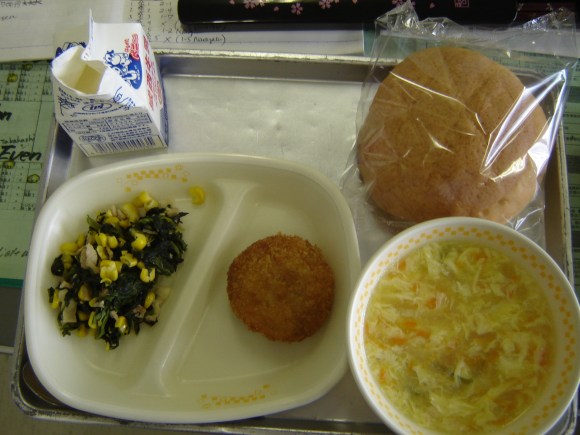
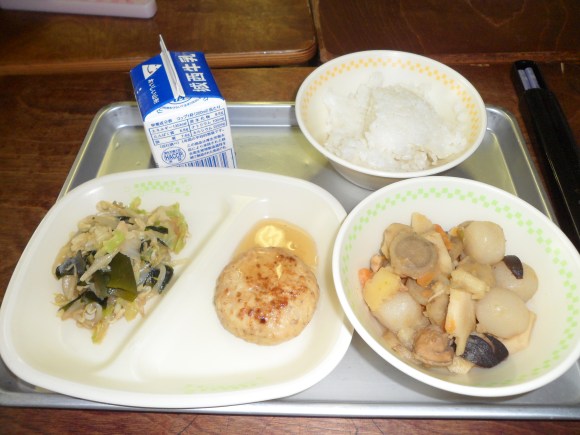
 Short video looks at why Japanese students serve their own school lunches, clean their classrooms
Short video looks at why Japanese students serve their own school lunches, clean their classrooms “Let them eat furikake!” says Mayor Hashimoto as Osaka school lunch saga rumbles on
“Let them eat furikake!” says Mayor Hashimoto as Osaka school lunch saga rumbles on Japanese people react to reading that “pizza is a vegetable in America”
Japanese people react to reading that “pizza is a vegetable in America” Japanese wife berates husband for eating rice and side dishes together
Japanese wife berates husband for eating rice and side dishes together Hi-Chew releases new Japanese School Lunch flavor to stimulate appetites and nostalgia
Hi-Chew releases new Japanese School Lunch flavor to stimulate appetites and nostalgia How to order snacks on a Shinkansen bullet train in Japan
How to order snacks on a Shinkansen bullet train in Japan Burger King Japan suddenly adds Dr. Pepper and Dr. Pepper floats to its menu nationwide
Burger King Japan suddenly adds Dr. Pepper and Dr. Pepper floats to its menu nationwide Demon Slayer: Kimetsu no Yaiba gets new roller coaster attractions and food at Universal Studios Japan
Demon Slayer: Kimetsu no Yaiba gets new roller coaster attractions and food at Universal Studios Japan Japan’s new difficult-to-drink-from beer glass protects your liver, but it’s a brutal experience
Japan’s new difficult-to-drink-from beer glass protects your liver, but it’s a brutal experience Hello, cosmetics! Clinique teams up with Hello Kitty this summer for first-time collaboration
Hello, cosmetics! Clinique teams up with Hello Kitty this summer for first-time collaboration Nintendo history you can feel – Super NES, N64, and GameCube controllers become capsule toys
Nintendo history you can feel – Super NES, N64, and GameCube controllers become capsule toys Studio Ghibli releases Ponyo donburi bowl to bring anime ramen to life
Studio Ghibli releases Ponyo donburi bowl to bring anime ramen to life A visit to the best UFO catcher arcade in the universe!
A visit to the best UFO catcher arcade in the universe! New samurai glasses are Japan’s latest weird must-have souvenir
New samurai glasses are Japan’s latest weird must-have souvenir New Japanese banknotes selling online for up to 40 times original value
New Japanese banknotes selling online for up to 40 times original value “The most Delicious Cup Noodle in history” – Japan’s French Cup Noodle wins our heart【Taste test】
“The most Delicious Cup Noodle in history” – Japan’s French Cup Noodle wins our heart【Taste test】 Starbucks releases a cute Frappuccino and Unicorn Cake…but not in Japan
Starbucks releases a cute Frappuccino and Unicorn Cake…but not in Japan Kyoto Tower mascot termination reveals dark side behind cute Japanese characters
Kyoto Tower mascot termination reveals dark side behind cute Japanese characters McDonald’s Japan’s Soft Twist Tower: A phantom ice cream only sold at select branches
McDonald’s Japan’s Soft Twist Tower: A phantom ice cream only sold at select branches Yabai Ramen: What makes this Japanese ramen so dangerous?
Yabai Ramen: What makes this Japanese ramen so dangerous? Finally! Nintendo Japan expands Switch 8-bit controller sales to everybody, Online member or not
Finally! Nintendo Japan expands Switch 8-bit controller sales to everybody, Online member or not Japanese government wants to build luxury resorts in all national parks for foreign tourists
Japanese government wants to build luxury resorts in all national parks for foreign tourists To combat declining birth rate, Japan to begin offering “Breeding Visas” to foreigners
To combat declining birth rate, Japan to begin offering “Breeding Visas” to foreigners 10 things you should buy at 7-Eleven in Japan
10 things you should buy at 7-Eleven in Japan Studio Ghibli releases anime heroine cosplay dresses that are super comfy to wear
Studio Ghibli releases anime heroine cosplay dresses that are super comfy to wear Woman charged for driving suitcase without a license in Osaka
Woman charged for driving suitcase without a license in Osaka Studio Ghibli unveils My Neighbour Totoro miniature house model
Studio Ghibli unveils My Neighbour Totoro miniature house model Kyoto experiencing problems with foreign tourists not paying for bus fares, but not on purpose
Kyoto experiencing problems with foreign tourists not paying for bus fares, but not on purpose Fighting mild hunger with a Japanese soda that turns into jelly in the stomach【Taste test】
Fighting mild hunger with a Japanese soda that turns into jelly in the stomach【Taste test】 Studio Ghibli’s Howl’s Moving Castle tapestry unveiled in Japan for first time
Studio Ghibli’s Howl’s Moving Castle tapestry unveiled in Japan for first time McDonald’s new Happy Meals offer up cute and practical Sanrio lifestyle goods
McDonald’s new Happy Meals offer up cute and practical Sanrio lifestyle goods Sales of Japan’s most convenient train ticket/shopping payment cards suspended indefinitely
Sales of Japan’s most convenient train ticket/shopping payment cards suspended indefinitely Sold-out Studio Ghibli desktop humidifiers are back so Totoro can help you through the dry season
Sold-out Studio Ghibli desktop humidifiers are back so Totoro can help you through the dry season Japanese government to make first change to romanization spelling rules since the 1950s
Japanese government to make first change to romanization spelling rules since the 1950s Foreigner’s request for help in Tokyo makes us sad for the state of society
Foreigner’s request for help in Tokyo makes us sad for the state of society Ghibli founders Toshio Suzuki and Hayao Miyazaki contribute to Japanese whisky Totoro label design
Ghibli founders Toshio Suzuki and Hayao Miyazaki contribute to Japanese whisky Totoro label design Doraemon found buried at sea as scene from 1993 anime becomes real life【Photos】
Doraemon found buried at sea as scene from 1993 anime becomes real life【Photos】 Tokyo’s most famous Starbucks is closed
Tokyo’s most famous Starbucks is closed Princesses, fruits, and blacksmiths: Study reveals the 30 most unusual family names in Japan
Princesses, fruits, and blacksmiths: Study reveals the 30 most unusual family names in Japan Curry restaurants across Japan create social media movement: “Don’t blame the curry!”
Curry restaurants across Japan create social media movement: “Don’t blame the curry!” Japanese school lunch noodles fried so hard that children and teachers chip teeth, go to hospital
Japanese school lunch noodles fried so hard that children and teachers chip teeth, go to hospital Proceeds from gourmet New Year’s meals to be donated to help feed undernourished children
Proceeds from gourmet New Year’s meals to be donated to help feed undernourished children National Film Archive of Japan releases shocking historical videos of 1923 Great Kanto Earthquake
National Film Archive of Japan releases shocking historical videos of 1923 Great Kanto Earthquake Salvatore Cuomo restaurants are offering an all-you-can-eat pizza & pasta lunch buffet for cheap
Salvatore Cuomo restaurants are offering an all-you-can-eat pizza & pasta lunch buffet for cheap Children’s “randoseru” backpacks star in Japanese ad campaign with whimsical Victorian vibe
Children’s “randoseru” backpacks star in Japanese ad campaign with whimsical Victorian vibe 1 in 20 Japanese junior high school students regularly missing school, government study finds
1 in 20 Japanese junior high school students regularly missing school, government study finds Brothers’ bento blooper shows the potential downside of having your mom pack your lunch in Japan
Brothers’ bento blooper shows the potential downside of having your mom pack your lunch in Japan Japan’s first genderless, two-piece school swimsuits are now available for adoption by schools
Japan’s first genderless, two-piece school swimsuits are now available for adoption by schools Cat shaped seaweed can turn even the most unappetising meals into adorable works of art
Cat shaped seaweed can turn even the most unappetising meals into adorable works of art Japanese PM asks schools around Japan to close as coronavirus cases rise
Japanese PM asks schools around Japan to close as coronavirus cases rise The top 20 must-try restaurants in Tokyo, as chosen by travelers
The top 20 must-try restaurants in Tokyo, as chosen by travelers Kids’ lunch for adults selling for a limited time at Katsuya
Kids’ lunch for adults selling for a limited time at Katsuya Super Budget Dining in Japan – What’s the best way to spend 1,000 yen (US$6.70) at Saizeriya?
Super Budget Dining in Japan – What’s the best way to spend 1,000 yen (US$6.70) at Saizeriya? Why are some Japanese preschools banning awesome, adorable character bento?
Why are some Japanese preschools banning awesome, adorable character bento? Tokyo restaurant’s all-you-can-eat curry, udon is under five bucks, comes with free fried chicken
Tokyo restaurant’s all-you-can-eat curry, udon is under five bucks, comes with free fried chicken All-you-can-eat yakiniku, curry, and ice cream, all for just 10 bucks at this Tokyo restaurant
All-you-can-eat yakiniku, curry, and ice cream, all for just 10 bucks at this Tokyo restaurant
Leave a Reply